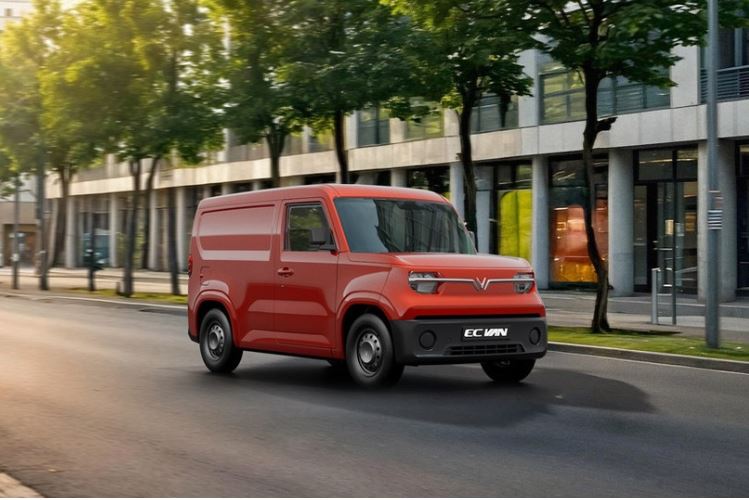The ResearchAndMarkets report, published on GlobeNewswire, indicates that the global commercial electric vehicle market is experiencing explosive growth, with a compound annual growth rate (CAGR) of 23.8% between 2024 and 2030. From a value of $70.9 billion in 2024, the sector is projected to reach $255.6 billion by 2030.
The report identifies three key drivers of this growth. First, stringent emissions regulations in the US, EU, and China are compelling transport companies to "green" their fleets. Second, the fluctuating cost of fossil fuels is increasing the demand for more stable solutions. Finally, clients of logistics companies, including retailers and global supply chains, are demanding stricter ESG (Environmental, Social, and Governance) standards. Electric trucks provide an immediate response to all three of these pressures.
According to Mike Brown, Vice President of VEV (a consulting firm specializing in energy transition in logistics), the conditions driving electrification are clearly converging. In his article "2025: The Year of the Electric Truck" published on VEV's official website, he states that the ecosystem is changing, from finance and manufacturing to legal regulations. Electrification of the transport sector is no longer a strategic choice but a necessity for businesses to survive in an economy moving towards net-zero emissions.
The Vice President of VEV emphasized that once core factors like total cost of ownership (TCO) become competitive with, or even lower than, traditional diesel vehicles, the last major barrier to large-scale electric truck deployment will virtually disappear.
Advantages include rapidly developing charging station infrastructure and improved battery technology that increases operating range while significantly reducing charging times. Notably, investment capital is now shifting from the "testing" phase to "mass deployment," a phenomenon not seen before.
 |
A fleet of commercial trucks travels on a cross-country route in the UK. Photo: ResearchAndMarkets |
A fleet of commercial trucks travels on a cross-country route in the UK. Photo: ResearchAndMarkets
A prime example is Wincanton (a long-standing logistics company in the UK) announcing plans to operate 24 electric heavy goods vehicles (eHGVs) in 2025. This marks the first large-scale deployment of a fleet of vehicles with payloads over 40 tons in this market. The eHGVs, supplied by DAF Trucks, Volvo Trucks, and Renault Trucks, can operate at high frequencies comparable to diesel trucks, but reduce CO2 emissions by approximately 2,400 tons annually, equivalent to the emissions of over 500 passenger cars.
This project is part of Wincanton's long-term strategy to achieve Net Zero by 2040. A company representative stated that the deployment is supported by a newly built industrial charging station system integrated with energy consumption monitoring technology, helping the company optimize costs and operational efficiency.
The global transport market is entering a period of significant transformation as commercial vehicles, the "backbone" of logistics operations, begin to transition from fossil fuels to electrification. This process is no longer just at the pilot stage but has expanded into a wave of serious, systematic investment driven by the Net Zero target. 2025 is predicted by many international experts to be the tipping point for the electric truck revolution.
In Vietnam, the commercial electric vehicle wave is also making its first strides, notably with Gozo Express's order of 2,000 VinFast EC Van small electric trucks. This is one of the first large-scale commercial electric vehicle orders in the domestic market, reflecting the trend of electrification no longer being exclusive to developed economies.
While not yet at the scale of Europe or China, Gozo's move is considered a starting point for a large potential market. The VinFast EC Van, a vehicle designed specifically for urban delivery, is targeting a segment that companies like GHN, GHTK, and Lazada Logistics could also enter in the future. Deploying electric fleets helps businesses reduce fuel costs and increase their ESG scores, a factor increasingly important to customers and investors.
 |
VinFast EC Van, a fully electric truck. Photo: VinFast |
VinFast EC Van, a fully electric truck. Photo: VinFast
However, challenges remain. One major obstacle is the charging infrastructure, which has not kept pace with the development of commercial electric vehicles, especially for heavy-duty trucks. Additionally, the initial investment remains high, making it difficult for small and medium-sized enterprises to transition their fleets. Technically, fast charging for large-capacity trucks is still being improved but is not yet widespread in emerging markets.
Despite these challenges, current developments indicate that the electric transport revolution is no longer a prediction. From the UK, US, and China to Vietnam, electric commercial vehicles are increasingly appearing on the roads and in the long-term development strategies of logistics companies.
Thai Anh












